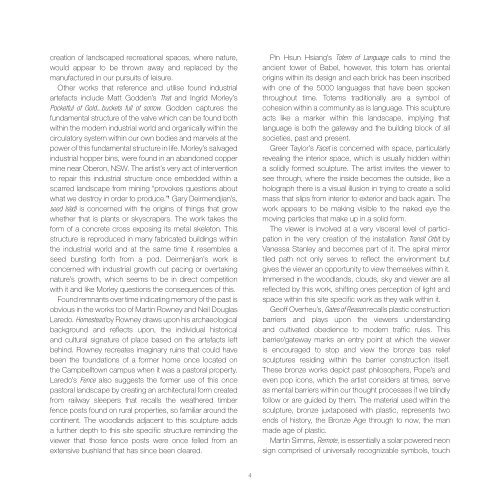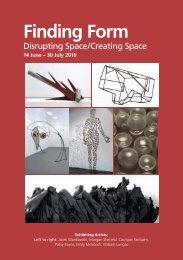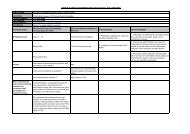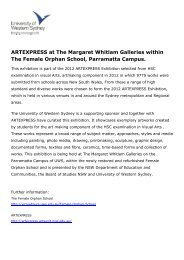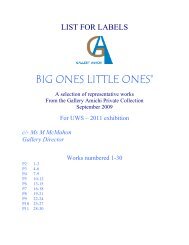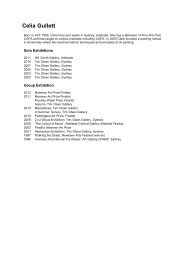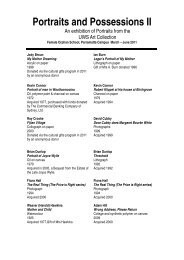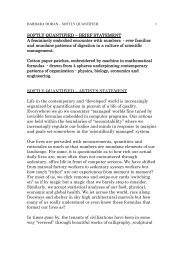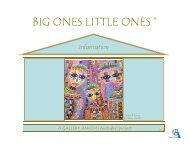UWS Sculpture Award and Exhibition 2012 - Art Gallery - University ...
UWS Sculpture Award and Exhibition 2012 - Art Gallery - University ...
UWS Sculpture Award and Exhibition 2012 - Art Gallery - University ...
- No tags were found...
Create successful ePaper yourself
Turn your PDF publications into a flip-book with our unique Google optimized e-Paper software.
creation of l<strong>and</strong>scaped recreational spaces, where nature,would appear to be thrown away <strong>and</strong> replaced by themanufactured in our pursuits of leisure.Other works that reference <strong>and</strong> utilise found industrialartefacts include Matt Godden’s That <strong>and</strong> Ingrid Morley’sPocketful of Gold....buckets full of sorrow. Godden captures thefundamental structure of the valve which can be found bothwithin the modern industrial world <strong>and</strong> organically within thecirculatory system within our own bodies <strong>and</strong> marvels at thepower of this fundamental structure in life. Morley’s salvagedindustrial hopper bins, were found in an ab<strong>and</strong>oned coppermine near Oberon, NSW. The artist’s very act of interventionto repair this industrial structure once embedded within ascarred l<strong>and</strong>scape from mining “provokes questions aboutwhat we destroy in order to produce.” 1 Gary Deirmendjian’s,seed |sēd| is concerned with the origins of things that growwhether that is plants or skyscrapers. The work takes theform of a concrete cross exposing its metal skeleton. Thisstructure is reproduced in many fabricated buildings withinthe industrial world <strong>and</strong> at the same time it resembles aseed bursting forth from a pod. Deirmenjian’s work isconcerned with industrial growth out pacing or overtakingnature’s growth, which seems to be in direct competitionwith it <strong>and</strong> like Morley questions the consequences of this.Found remnants over time indicating memory of the past isobvious in the works too of Martin Rowney <strong>and</strong> Neil DouglasLaredo. Homestead by Rowney draws upon his archaeologicalbackground <strong>and</strong> reflects upon, the individual historical<strong>and</strong> cultural signature of place based on the artefacts leftbehind. Rowney recreates imaginary ruins that could havebeen the foundations of a former home once located onthe Campbelltown campus when it was a pastoral property.Laredo’s Fence also suggests the former use of this oncepastoral l<strong>and</strong>scape by creating an architectural form createdfrom railway sleepers that recalls the weathered timberfence posts found on rural properties, so familiar around thecontinent. The woodl<strong>and</strong>s adjacent to this sculpture addsa further depth to this site specific structure reminding theviewer that those fence posts were once felled from anextensive bushl<strong>and</strong> that has since been cleared.Pin Hsun Hsiang’s Totem of Language calls to mind theancient tower of Babel, however, this totem has orientalorigins within its design <strong>and</strong> each brick has been inscribedwith one of the 5000 languages that have been spokenthroughout time. Totems traditionally are a symbol ofcohesion within a community as is language. This sculptureacts like a marker within this l<strong>and</strong>scape, implying thatlanguage is both the gateway <strong>and</strong> the building block of allsocieties, past <strong>and</strong> present.Greer Taylor’s Facet is concerned with space, particularlyrevealing the interior space, which is usually hidden withina solidly formed sculpture. The artist invites the viewer tosee through, where the inside becomes the outside, like aholograph there is a visual illusion in trying to create a solidmass that slips from interior to exterior <strong>and</strong> back again. Thework appears to be making visible to the naked eye themoving particles that make up in a solid form.The viewer is involved at a very visceral level of participationin the very creation of the installation Transit Orbit byVanessa Stanley <strong>and</strong> becomes part of it. The spiral mirrortiled path not only serves to reflect the environment butgives the viewer an opportunity to view themselves within it.Immersed in the woodl<strong>and</strong>s, clouds, sky <strong>and</strong> viewer are allreflected by this work, shifting ones perception of light <strong>and</strong>space within this site specific work as they walk within it.Geoff Overheu’s, Gates of Reason recalls plastic constructionbarriers <strong>and</strong> plays upon the viewers underst<strong>and</strong>ing<strong>and</strong> cultivated obedience to modern traffic rules. Thisbarrier/gateway marks an entry point at which the vieweris encouraged to stop <strong>and</strong> view the bronze bas reliefsculptures residing within the barrier construction itself.These bronze works depict past philosophers, Pope’s <strong>and</strong>even pop icons, which the artist considers at times, serveas mental barriers within our thought processes if we blindlyfollow or are guided by them. The material used within thesculpture, bronze juxtaposed with plastic, represents twoends of history, the Bronze Age through to now, the manmade age of plastic.Martin Simms, Remote, is essentially a solar powered neonsign comprised of universally recognizable symbols, touch4


